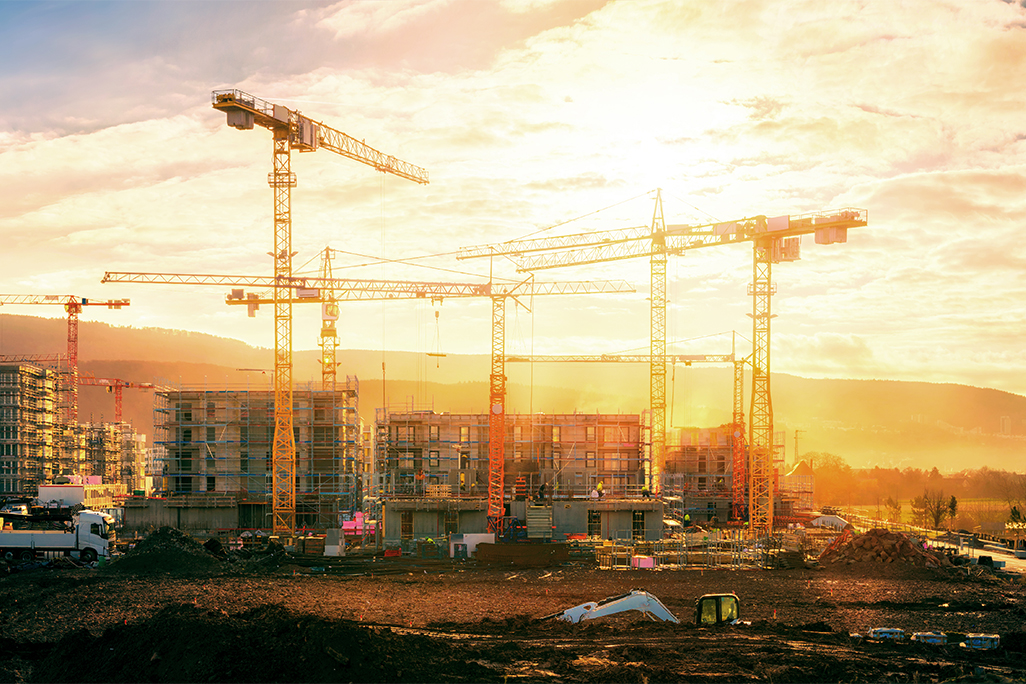The Grenfell Tower Inquiry Phase 2 Report and its potential impact on UK regulation of the built environment
Published on 30th September 2024
What might the report's damning criticisms and recommendations mean for industry?

Released on 4 September 2024, some seven years after the cladding fire in which 72 residents tragically lost their lives, the long anticipated second and final 1700 page Grenfell Tower Inquiry Phase 2 Report accuses numerous firms, organisations and public bodies of a "merry-go-round of buck passing", with widespread and systemic failures identified across the board. The criticisms levied in the report are numerous and include government, the local authority (including its building control function), construction parties, the tenant management organisation, the fire service and industry bodies.
As the construction industry begins to grapple with the report's detailed and technical evaluation of the incident, how might it change the legal and regulatory landscape in the future? This Insight summarises the key issues identified and recommendations made in the report.
Key issues
A 'seriously defective' system for regulation of High Rise Buildings
The report states that the government failed to implement or keep under review the recommendations from the Environment and Transport Select Committee regarding amendments to the statutory guidance (Approved Document B), which is poorly worded, provides inadequate information about fire-safe design and is liable to mislead designers into thinking that compliance with its terms alone would ensure compliance with the Building Regulations.
More generally, the report concluded that the system for regulating the construction and refurbishment of high-rise residential buildings was fragmented, involving multiple government departments and bodies, leading to inefficiency and ineffective regulation.
Lack of technical competence and a 'casual attitude towards fire safety'
Those involved in the design and construction of the refurbishment did not properly understand the relevant provisions of the Building Regulations, Approved Document B, or industry guidance. Personnel were often inexperienced or unqualified and demonstrated a lack of technical expertise in fire safety, particularly regarding the choice of materials.
Industry's failure to police itself
Attempts at industry self-regulation were ineffective. Different testing bodies had varying criteria for assessing materials, which led to confusion and enabled manufacturers to easily "game the system".
The report accuses companies responsible for manufacturing the cladding and insulation of being engaged in deliberate, sustained and systematic dishonesty; manipulating testing processes, results and data; and concealing the fire risks of their products.
Certification bodies failed to scrutinise information they were given by manufacturers, nor ensure that the statements in their product certificates were accurate and based on appropriate and relevant test evidence.
The commercial interests of conformity assessment bodies conflicted with their regulatory functions. In many cases building control saw itself as a source of assistance and almost as an extension of the design team, rather than an impartial compliance body there to enforce the Building Regulations rigorously.
Recommendations
The report made 59 recommendations to address the issues that led to the fire. These are aimed at parties across the board, from the highest levels of government down to individuals and small businesses.
Government
The report suggests that a secretary of state for fire safety should be supported by a new chief construction adviser, bringing government responsibility for fire safety into a single department.
Single construction regulator
The report suggests a single "construction regulator", reporting to a secretary of state and responsible for the entire industry, to provide a focal point for driving a cultural change in the sector, facilitate information sharing and to regulate all aspects of construction safety.
Legislation and guidance
Those in the construction industry will be aware of the enhanced requirements, introduced in the Building Safety Act 2022, regarding fire safety where "higher-risk buildings" are concerned. The report calls the current definition of higher-risk buildings “arbitrary” and recommends that it is widened to take account of “the nature of its use” and “the likely presence of vulnerable people”.
It could be that certain types of building such as care homes, supported housing, temporary housing and buildings with high numbers of children could potentially be brought in scope, drastically increasing the number of buildings in the higher risk category.
The report calls for an urgent review of the statutory guidance within Approved Document B. "Fresh minds", from both academia and industry, are needed when revising regulations and statutory guidance, which the report states should be kept under continuous review to keep up with product and technology changes and should focus more on fire safety.
The report recommends that a panel should be appointed to consider whether building control functions should be performed by those with a commercial interest in the process and whether all building control functions should be performed by a national authority.
Licensing and accreditation of certain professions and roles
The report calls for the introduction of a licensing system for contractors and architects working on higher-risk buildings, to ensure that they meet specific qualifications and understand fire safety regulations.
It suggests that a director or senior manager of the principal contractor should be required to make a personal undertaking to take all reasonable care to ensure that on completion and handover the building is safe and compliant. This is designed to increase individual accountability in the decision-making process and overcome the problems of blame-shifting.
Furthermore, the report recommends that fire engineers should become part of a formally recognised, regulated profession, with clearly defined knowledge requirements, skills and qualifications.
It also proposes the introduction of a mandatory accreditation requirement for those who undertake fire risk assessments, alongside set standards for qualifications and continuing professional development.
Gateway 2: Fire safety strategy
The report recommends that it should be a statutory requirement that a fire safety strategy produced by a registered fire engineer be submitted with building control applications (at Gateway 2) for the construction or refurbishment of any higher-risk buildings and for it to be reviewed and re-submitted at the stage of completion (Gateway 3).
Certification and testing of construction products
The report recommends that testing procedures should be standardised and made more rigorous, ensuring that tests are conducted in real-life conditions, particularly for high-rise buildings.
Additionally, the report recommends that the construction regulator should be responsible for assessing the conformity of construction products and issuing certificates.
To ensure greater transparency, it recommends that manufacturers should be required to provide the full testing history of products and make test results publicly available.
Government's response
The prime minister has promised a government response to the report within six months. In his statement following the publication of the report, he said the government will:
- Write to all companies found by the Inquiry to have been part of the failings as a "first step" to stop them being awarded government contracts.
- Introduce a new Residential Personal Emergency Evacuation Plan policy (a recommendation from the first report) for anyone whose ability to evacuate could be compromised.
- Take steps to force freeholders to assess their buildings and enter remediation schemes within set timetables, with a legal requirement to force action if necessary. Further steps on remediation are to be set out in the autumn, this follows government comment, after a fire at a tower block in east London at the end of August, that the pace of removal of unsafe cladding has been too slow.
- Reform the construction products industry.
- Ensure that social landlords are held to account for the decency and safety of their homes.
- Support potential prosecutions by the Metropolitan Police.
Osborne Clarke comment
The scope of changes suggested by the Grenfell Tower Inquiry Phase 2 Report are both significant and far-reaching. The government is under no obligation to adopt any of its recommendations but it seems likely that changes will follow.
Some of the recommendations would necessarily have a big impact on industry: a revised definition of "higher-risk buildings" for example, could bring many more buildings under the enhanced regime and could have an impact on viability of developments that were previously understood to be outside that regime. The introduction of new accreditation and licensing requirements would necessitate an overhaul in the way that industry professionals are trained, qualified and regulated. The industry should continue to monitor the government’s developing response closely.
If you would like guidance on the topics discussed in this article, please get in touch with one of our experts below.










